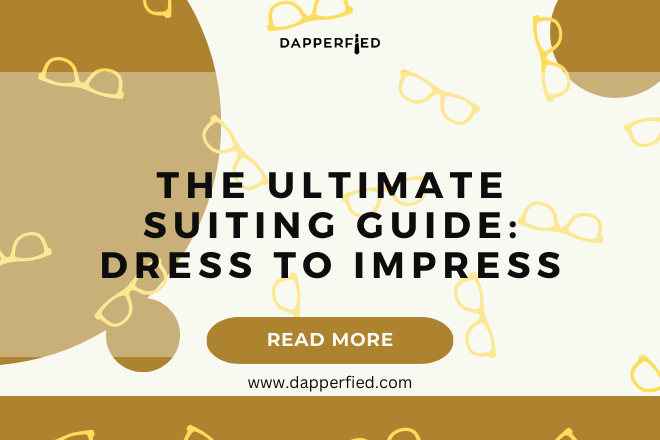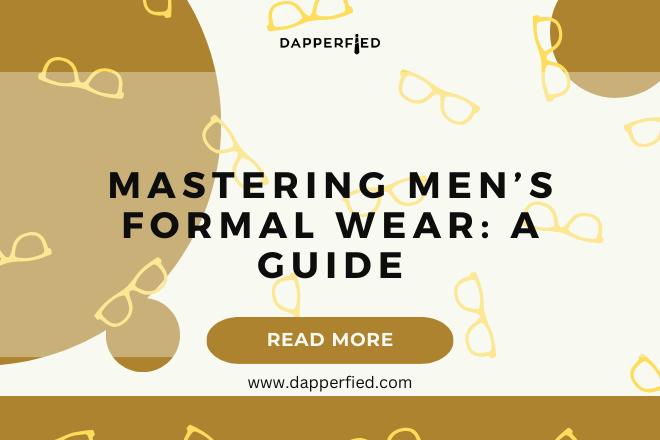
Men's Style
The Essential Men’s Suit Fit Guide: Perfect Your Look
A well-fitted suit is an essential wardrobe staple for any man. It not only enhances your appearance but also boosts your confidence and makes a great impression. Whether you’re attending a formal event, going to a job interview, or simply want to look sharp for a special occasion, a properly fitted suit can make all the difference.
When a suit fits well, it accentuates your body’s natural shape and proportions, making you look taller, slimmer, and more put together. On the other hand, an ill-fitting suit can make you appear sloppy and unprofessional. It’s important to understand the basics of suit selection, tailoring, and accessorizing to ensure that you always look your best.
Key Takeaways
- A properly fitting suit is essential for a polished and professional look.
- When selecting a suit, consider the fabric, color, and pattern to suit your personal style and occasion.
- From classic to modern, there are various men’s suiting styles to choose from.
- To get the perfect fit, follow a tailored suit guide and pay attention to proper measurements.
- When shopping for a suit, look for quality materials, construction, and fit, and don’t forget to accessorize and care for your suit properly.
The Basics of Suit Selection: Fabric, Color, and Pattern
When it comes to selecting a suit, there are several factors to consider. The first is the fabric. Different fabrics have different characteristics and advantages. For example, wool is a popular choice for suits due to its durability, breathability, and ability to drape well on the body. Other options include cotton, linen, and synthetic blends.
Next, consider the color and pattern of the suit. Classic colors like navy blue, charcoal gray, and black are versatile and appropriate for most occasions. However, don’t be afraid to experiment with bolder colors like burgundy or patterns like pinstripes or checks for more casual events.
Men’s Suiting Styles: From Classic to Modern
Suits come in various styles, each with its own unique characteristics. Classic styles like the single-breasted two-button suit are timeless and suitable for most body types. Double-breasted suits are more formal and add an extra touch of elegance. For a more modern look, consider a slim-fit or tailored suit that hugs the body’s contours.
When choosing a suit style, it’s important to consider your body type and personal taste. If you have a larger build, opt for a suit with wider lapels and a longer jacket length to create a balanced silhouette. Conversely, if you have a slimmer build, a slim-fit suit can help create the illusion of broader shoulders and a more defined waistline.
The Tailored Suit Guide: How to Get the Perfect Fit
| Metrics | Values |
|---|---|
| Number of pages | 25 |
| Number of chapters | 5 |
| Number of illustrations | 12 |
| Number of tips | 20 |
| Number of measurements | 10 |
| Number of fabrics discussed | 8 |
| Number of tailoring techniques explained | 6 |
| Number of recommended tailors | 3 |
While off-the-rack suits can be convenient, they often require some alterations to achieve the perfect fit. Investing in a tailored suit is worth it as it ensures that every aspect of the suit is customized to your body shape and size.
To get the perfect fit, start by taking accurate measurements of your chest, waist, hips, and inseam. These measurements will serve as a guide when selecting the appropriate suit size. When trying on a suit, pay attention to the fit of the shoulders, chest, waist, and sleeves. The shoulders should align with your natural shoulder line, and there should be no pulling or bunching in the chest or waist area.
Suit Buying Tips: What to Look for When Shopping
When shopping for a suit, it’s important to consider factors beyond just fit. Quality is key when it comes to suits. Look for suits made from high-quality fabrics and with well-constructed seams and linings. Pay attention to details like button quality and stitching.
In terms of fit, remember that alterations can only do so much. It’s best to start with a suit that fits well in the shoulders and chest as these are the most difficult areas to alter. Additionally, consider your budget when shopping for a suit. While designer brands may offer superior quality and craftsmanship, there are also affordable options available that can still provide a great fit and style.
Dressing for the Occasion: Men’s Formal Wear Etiquette

Different occasions call for different levels of formality when it comes to men’s suits. It’s important to understand the dress code and adhere to it to avoid any fashion faux pas. For black-tie events, a tuxedo is the appropriate choice. Opt for a black or midnight blue tuxedo with a white dress shirt, black bow tie, and black patent leather shoes.
For formal business events, a dark-colored suit with a conservative tie is appropriate. Avoid flashy patterns or bright colors and opt for classic styles instead. For more casual occasions, you can experiment with different colors, patterns, and accessories to showcase your personal style.
The Importance of Proper Suit Measurements
Proper suit measurements are crucial for achieving a well-fitted suit. Even the highest quality suit will look unflattering if it doesn’t fit properly. Taking accurate measurements is the first step in ensuring that your suit fits like a glove.
When measuring for a suit, use a flexible tape measure and have someone assist you for more accurate results. Measure your chest at its widest point, your waist at its narrowest point, and your hips at their widest point. Additionally, measure your inseam from the crotch to the desired length of the pants.

Alterations 101: How to Make Your Suit Fit Like a Glove
Even with accurate measurements, it’s common for suits to require some alterations to achieve the perfect fit. Finding a good tailor is essential as they can make adjustments to various aspects of the suit to ensure that it fits your body shape and size perfectly.
Common alterations include shortening or lengthening the sleeves and pants, taking in or letting out the waist, and adjusting the shoulders. A skilled tailor can also make adjustments to the jacket’s length and collar if needed. It’s important to communicate your preferences clearly with your tailor and try on the suit multiple times during the alteration process to ensure that you’re satisfied with the final result.
Accessorizing Your Suit: Ties, Pocket Squares, and More
Accessories play a crucial role in completing the look of a suit. They add personality and style to an otherwise plain outfit. The most common accessory worn with a suit is a tie. When choosing a tie, consider the color, pattern, and fabric. A silk tie in a solid color or subtle pattern is a safe choice for most occasions.
Pocket squares are another popular accessory that can add a touch of elegance to a suit. They come in various colors and patterns and can be folded in different ways to create different looks. Cufflinks, tie bars, and lapel pins are other accessories that can be worn to enhance the overall appearance of a suit.
Caring for Your Suit: Maintenance and Storage Tips
Proper care and maintenance are essential for keeping your suit looking its best for years to come. After wearing your suit, hang it on a sturdy hanger to allow it to air out and release any wrinkles. Avoid hanging it in direct sunlight or near heat sources as this can cause the fabric to fade or become damaged.
Regular dry cleaning is necessary to remove any stains or odors from your suit. However, excessive dry cleaning can cause the fabric to deteriorate over time. It’s best to follow the care instructions provided by the manufacturer and only dry clean your suit when necessary.
A well-fitted suit is an investment that pays off in terms of confidence and style. By understanding the basics of suit selection, tailoring, and accessorizing, you can ensure that you always look your best in any formal or professional setting. Remember to take accurate measurements, find a good tailor, and choose high-quality fabrics and accessories. With proper care and maintenance, your suit will continue to make a great impression for years to come.
If you’re looking to complete your dapper look, don’t forget to accessorize with a stylish timepiece. In our related article on watches, we explore the different types of watches available and how to choose the perfect one to complement your suit. From classic dress watches to sporty chronographs, we’ve got you covered. Check out our Men’s Watch Guide for all the tips and recommendations you need to elevate your style game.
FAQs
What is a men’s suit fit guide?
A men’s suit fit guide is a comprehensive guide that provides information on how a suit should fit a man’s body. It covers various aspects of suit fitting, including the jacket, trousers, and shirt.

Why is it important to have a well-fitted suit?
A well-fitted suit enhances a man’s appearance and boosts his confidence. It also ensures comfort and ease of movement, making it easier to carry out daily activities.
What are the different types of suit fits?
The different types of suit fits include slim fit, regular fit, and classic fit. Slim fit suits are more form-fitting, while regular fit suits are more relaxed. Classic fit suits are the most traditional and have a looser fit.
How should a suit jacket fit?
A suit jacket should fit snugly around the shoulders and chest, with no pulling or bunching. The sleeves should end at the wrist bone, and the length should cover the buttocks.
What should be considered when fitting suit trousers?
When fitting suit trousers, the waistband should sit comfortably at the waist, and the trousers should fit snugly around the hips and thighs. The length should be just above the shoe, with a slight break in the fabric.
What should be considered when fitting a suit shirt?
When fitting a suit shirt, the collar should fit comfortably around the neck, with enough room to fit two fingers between the collar and neck. The sleeves should end at the wrist bone, and the shirt should fit snugly around the chest and waist.















